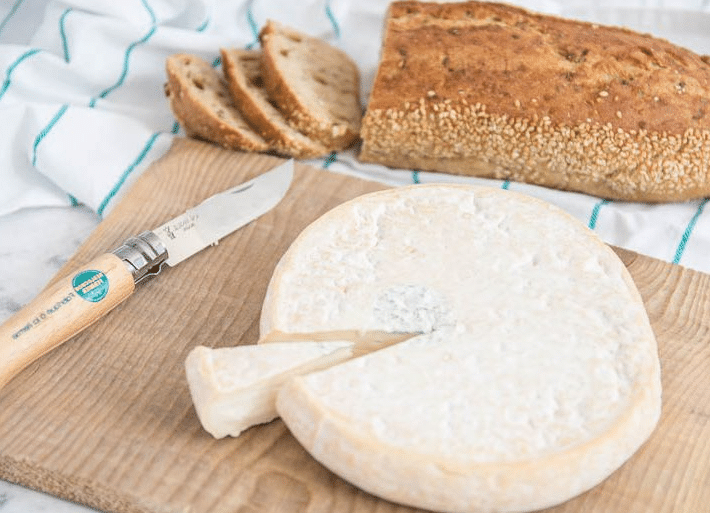An emblematic cheese from the mountains around Annecy, Reblochon is one of the best known PDO cheeses in France. How to choose a good Reblochon? And how to taste it?
The history of a cheese like no other
This cheese would have appeared between the 13th and 14th century in the Aravis valley. Its name only appears in the writings from the beginning of the 18th century because its history is particular.
Before the French Revolution, there were many taxes that farmers had to pay to the local lord. For milk producers, the tax base was based on the volume of milk produced on each farm. In order to avoid part of the tax, the farmer did not milk his cows completely. A second milking made it possible to obtain a second milk of good quality, the “rebloche”. The cheese produced thus took the name of reblochon in the Aravis.
Choosing a good Reblochon
The production of this raw milk cow’s milk cheese has been regulated by the national PDO label since 1996. It is produced from a pressed, uncooked paste. Only dairy farms located in a well-defined area are authorised to produce Reblochon: part of Haute-Savoie, including the Thônes valley, and a limited part of Savoie.
Although the geographical area is limited, the annual tonnage is significant with nearly 1,000 producers. The milk of the Abondance, Montbéliarde and Tarine cows is used to produce a cheese just after milking, which weighs almost 500 grams and is 14 cm in diameter.
The historic heart of Reblochon production is in Thônes, 20 minutes from Annecy. Today there are about 800 producers and Reblochon is the third largest AOC cheese in terms of annual tonnage.

There are two qualities of Reblochon:
- Farmhouse Reblochon: it is produced with only milk from the farmer’s herd (20 to 60 cows). The processing is done just after milking with the hot milk, twice a day. The flavour is stronger and the texture smoother. This method of production favours short circuits and thus preserves nature and the sustainability of the farms. To recognise it, it has a small green dot in its centre.
- Reblochon fruitier: it is made by blending the milk of several farms grouped into cooperatives. A small red dot in the centre characterises it. It can be used for tasting, but also as an ingredient in local culinary specialities (tartiflette, croziflette).
Reblochon has a fat content of 25% and 5 litres of milk are needed for this cheese.
Prices range from €5 for a fruit reblochon to €8 for a farmhouse reblochon. Depending on your preference, if you press the middle of the cheese, if it is a little soft, you will get a stronger flavour and a runnier paste. Depending on your taste, you can remove the rind, which is still edible.
How to enjoy your Reblochon?
As a table cheese
In cooked preparation
You can use it for many preparations:
- A delicious tartiflette
- A croziflette: similar to the tartiflette, the crozets of Savoie, which are pasta cut into small squares, replace the potatoes
- A reblochon tart: the comté cheese is replaced by reblochon
- A mountain burger: Reblochon replaces the rather bland cheeses usually used
- A Reblochon pizza: tastier than with mozzarella, a cream base should be prepared rather than a tomato base
- A breaded Reblochon: to be baked in the oven and eaten with a green salad
- A macaroni and chorizo gratin: the creamy flavour of the Reblochon blends subtly with the chorizo
Which wine to accompany Reblochon?
This cheese goes very well with many wines. Savoy wines are recommended, such as Apremont, Rousette or the excellent Chignin-Bergeron. White wines are more suitable for cooked dishes, while red wines are preferable for platters.
Fresh red wines such as young Burgundies, wines from the Loire and Collioure are also good combinations with Reblochon.
















